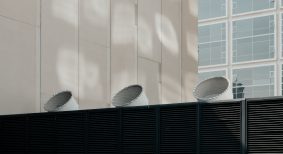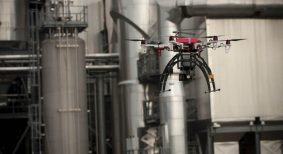Living walls, or integrated vegetation and plant systems within buildings, can have a positive impact on a property’s performance.
Indoors, living walls can enhance air quality and support occupants’ health and productivity, all with minimal obstruction of a building’s footprint. Outdoors, they can mitigate heat gain and loss through the vertical surfaces, and reduce infiltration of particles and other contaminants.
For building owners and managers, living walls are an investment with significant impact on their tenants’ well-being. Poor air quality can lead to headaches, fatigue, sinus problems, and skin and eye irritation.
Traditional ventilation and other systems related to indoor air quality can account for up to 25 per cent of a building’s energy load.
But indoor air biofilters, a special sub-group of living walls, act as a natural filter. Microbes found in and around the plant roots act as cleaning agents for dirty air, and start working within hours of first exposure. Recent studies at the University of Guelph demonstrated a 30 per cent reduction of common indoor air pollutants.
Living walls fall into two categories: plants can be rooted at the base of the wall, climbing up the vertical surface with the aid of a support system, or they can grow in rooting material attached to the vertical surface or wall.
The first approach, known as a plant facade, is the preferred exterior system in regions with prolonged sub-freezing temperatures since it offers more protection to roots safely buried in the ground and gives access to soil water, which has not been frozen.
There are also different ways to cultivate the plants. One is with traditional pots attached to the vertical surface. There is also a modified version of hydroponics, in which soil has been reduced to a support substrate that does little more than keep the plants from falling over.
Rather than needing soil to survive, plants require water, air, light, nutrients and a support system. In fact, soil can actually complicate the maintenance and long-term viability of a living wall. Water rarely flows evenly through a soil-based system, and some areas become over-watered and others under-watered. Over-watered soil creates a barrier to the air exchange at the roots system, and, without this air, the roots become anaerobic and die. Soil also falls victim to gravity, and may slough off the wall.
Plants in living walls tend to be similar to those found in more traditional uses. This includes foliage or tropical plants for interior applications, and herbaceous or grass species in exterior systems. There is some interest in walls of native plants or food crops. Facade applications predominantly feature vine species for both interior and exterior application.
The upkeep of larger walls may require special attention — some can be as much as 20 metres high — but 70 per cent of the maintenance regime is just standard horticultural practice. In general terms, there are few differences in the maintenance of soil-based and hydroponic living walls.
All walls require routine pruning, plant replacement and pest control. One person can typically maintain 100 to 200 square feet of living wall per hour, and this can be done on a monthly basis.
Once established, roughly 90 per cent of plants should survive, although this is an average number and is dependent on the plant selection and growing conditions. Poor light conditions are the most frequent factor for plant death in the hydroponic systems. Hardy, more utilitarian plants should be selected if survival is a concern.
Recent analysis suggests green roof construction will decrease over the next five years due to saturation of the market, whereas the living wall sector is still very much in the early phases of its development. Property owners can integrate all types of living walls into either new developments or an existing building.
Alan Darlington, PhD, is a researcher and founder of Nedlaw Living Walls. The company provides complete services for the design, installation and maintenance of their patented Living Wall Biofilters.






